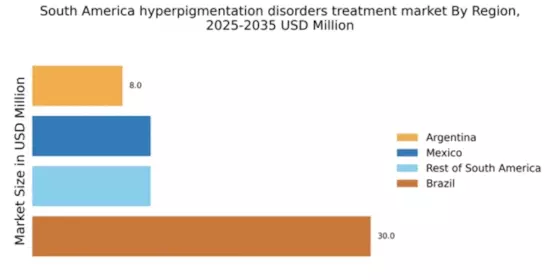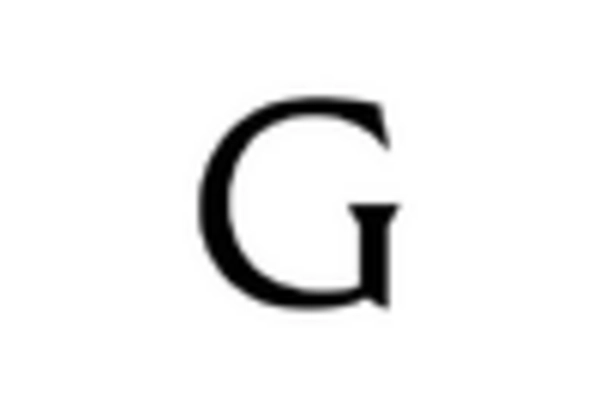Rising Disposable Incomes
Rising disposable incomes in South America are contributing to the growth of the hyperpigmentation disorders-treatment market. As individuals experience improved financial conditions, they are more inclined to invest in personal care and dermatological treatments. This trend is particularly pronounced among the middle and upper classes, who are increasingly prioritizing skin health and aesthetics. Market data indicates that spending on skincare products and treatments has increased by approximately 15% annually in recent years. This willingness to spend on effective hyperpigmentation treatments is likely to drive market expansion, as consumers seek high-quality products and services. Consequently, the hyperpigmentation disorders-treatment market stands to gain from this shift in consumer behavior.
Expansion of Dermatological Clinics
The expansion of dermatological clinics across South America significantly influences the hyperpigmentation disorders-treatment market. With an increasing number of specialized clinics, patients have greater access to professional care and treatment options. This trend is particularly evident in urban centers, where the density of dermatologists has risen by approximately 25% over the past five years. Enhanced access to dermatological services encourages individuals to seek treatment for hyperpigmentation disorders, thereby increasing market demand. Furthermore, these clinics often offer advanced treatment modalities, which can attract a broader patient base. As the number of clinics continues to grow, the hyperpigmentation disorders-treatment market is likely to benefit from increased patient engagement and treatment uptake.
Government Initiatives and Regulations
Government initiatives and regulations aimed at improving public health are influencing the hyperpigmentation disorders-treatment market in South America. Various health campaigns focus on skin health awareness, particularly regarding the dangers of UV exposure and the importance of early treatment for skin disorders. These initiatives often lead to increased funding for dermatological research and the development of new treatment options. Additionally, regulatory bodies are establishing guidelines to ensure the safety and efficacy of hyperpigmentation treatments. This supportive environment encourages innovation and investment in the market, potentially leading to a more diverse range of treatment options for consumers. As a result, the hyperpigmentation disorders-treatment market is likely to experience growth driven by these proactive governmental efforts.
Increasing Incidence of Skin Disorders
The rising incidence of skin disorders, particularly hyperpigmentation, is a notable driver in the hyperpigmentation disorders-treatment market in South America. Factors such as increased sun exposure, environmental pollution, and lifestyle changes contribute to this trend. According to recent studies, approximately 30% of the population in urban areas experiences some form of hyperpigmentation. This growing prevalence necessitates effective treatment options, thereby driving demand for innovative therapies and products. As awareness of skin health increases, consumers are more likely to seek treatments, further propelling market growth. The hyperpigmentation disorders-treatment market is thus positioned to expand as healthcare providers and manufacturers respond to this rising need for effective solutions.
Influence of Social Media and Beauty Trends
The influence of social media and evolving beauty trends plays a crucial role in shaping the hyperpigmentation disorders-treatment market in South America. Platforms such as Instagram and TikTok have become powerful tools for beauty influencers to promote skincare products and treatments. This exposure has heightened awareness of hyperpigmentation issues and the available treatment options. As beauty standards evolve, consumers are increasingly seeking solutions to achieve even skin tones, leading to a surge in demand for hyperpigmentation treatments. Market analysts suggest that the impact of social media could drive a growth rate of approximately 20% in the coming years. Thus, the hyperpigmentation disorders-treatment market is likely to benefit from this trend as consumers become more informed and engaged.


















Leave a Comment